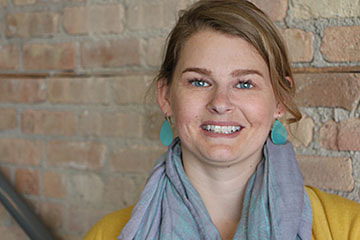|
In Kenosha County, high school graduates make at least $10,000 more than those who did not finish and are 42% more likely to be employed. We as a community have the opportunity to make a difference in the generations to come by providing them the tools, resources, knowledge, and motivation they need to succeed.
The current four year high school completion rate in Kenosha County is 88%, but this is not the case for all students. Although fairly high, only 80% of economically disadvantaged students graduate in four years, compared to their counterparts at 93%; and Black and Hispanic students graduate at rates of 75% and 84%, respectively, compared to their White counterparts at 92%. Currently, only 11% of jobs don’t require a high school degree or more. Applicants for positions in carpentry, in the warehouse at Uline, or part-time in customer service at Gander Mountain are all expected to have at least a high school diploma or equivalent (GED). By 2025, it’s estimated that 62% of jobs will require some kind of post-secondary credential. To continue in postsecondary education, whether it is getting certified as a CNA, esthetician, or earning a 4-year degree in any field—a high school diploma or GED is almost always required. Each step along the way is integral to graduation. A student not proficient in reading by third grade is 4 times less likely to graduate high school, and a student who passes algebra by the end of ninth grade is 75% more likely to graduate. Helping young students believe in their potential to understand math can make a huge impact on their future. Regardless of whether a student is meeting these requirements, there are opportunities in our community to increase high school completion. The Boys & Girls Club offers children of all ages a safe space for physical activity and homework support. Conversations about careers and education can begin at any age, and using a resource like Career Cruising, an online tool, can help. A community united around a shared goal of increasing high school completion will lead to better outcomes for both our children and our community. Get Involved
Words might be one of the most powerful tools we as humans have. As a partnership whose role is to bring our Kenosha County community together to improve student outcomes, we know words have the power to inspire people together towards action, or to divide and “other” groups that are different from us. When phrases are embedded in our everyday language, it can be difficult to take a step back and think about the broader meaning behind the words. But, we believe that using continuous improvement and being reflective in our work is the only way for us to move forward.
That’s why we encourage you to consider flipping a script that you may not even know that you have, and that we’ve also used. In education, it has become widely understood that there is an “achievement gap” that exists. This is most often used to describe the difference in academic outcomes between student groups--typically, between white students and students of color. Now, it is helpful to have a common language so that when people come together to create solutions, everyone is on the same page sooner and can help move the conversation further. And, we want to make certain that we’re creating positive narratives that will encourage all our Kenosha County students to achieve their full potential. In recent years, some have suggested replacing “Achievement Gap” with “Opportunity Gap.” The word “Achievement” very subtly attributes lower rates of academic success to the students themselves, or to the schools, rather than to the unequal and inequitable distribution of educational opportunities to different student groups and neighborhoods. This shift may also change our mindsets as we work together to identify solutions that lead to more equitable outcomes. Opportunities for students to choose and own books in their own home, attend high-quality early childhood education, participate in summer camps, and build relationships with adults with varying careers and post-secondary credentials, all have a compounding effect on a student’s achievement over their lifetime. The issue, therefore, is an opportunity gap, not an achievement gap. Our hope is that this re-frame will inspire us to continue working together towards systems change--leading to systems where all of our students have access to equitable opportunities to support and promote their learning and success. How You Can Help:
|
Categories
All
Archives
May 2024
|





